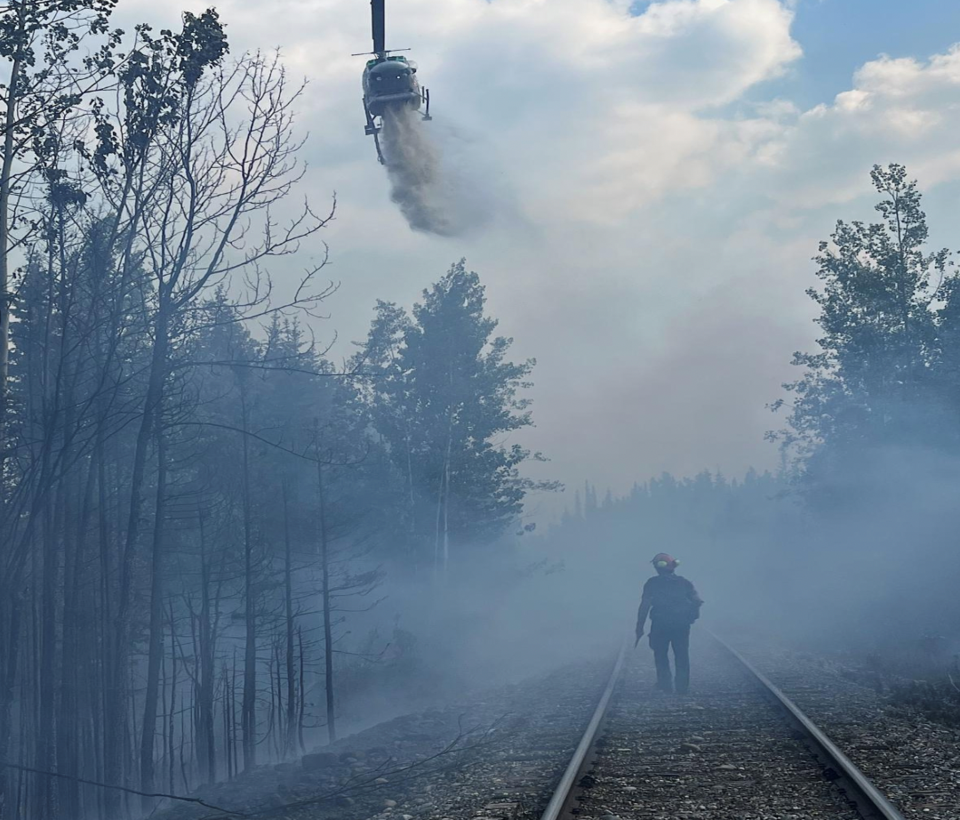The above headline is slightly misleading. Winter wildfires are a relatively common occurrence in B.C., with many blazes lingering and smouldering underground through the colder months.
But with the effects of the dastardly El Niño resounding up and down our fair province, snow packs everywhere are leaving much to be desired.
This week’s winter storms will no doubt help with snow cover on the forest floor in Whistler. Asked about forest conditions prior to the snow dump, the Resort Municipality of Whistler (RMOW) said it is not aware of any overwintering fires—or “zombie fires,” as they are sometimes called—in the area.
How the low snowpack and warmer temperatures impact this summer’s fire season will depend on the rain we get in spring and early summer— but “the concern for wildfire in the season ahead is significant,” a municipal spokesperson said.
That might be putting it lightly after last summer’s record-breaking fire season and this winter’s low precipitation.
In the face of its own low snowpacks and dry forecast, Alberta declared an early start to its wildfire season last week, and in B.C., more than 90 wildfires were actively burning as of Feb. 26.
It’s not unheard of—the devastating Fort McMurray fire started May 1, 2016, and wasn’t declared out until the summer of 2017, for example—but B.C.’s intense 2023 wildfire season is still lingering into 2024.
“The 2023 fire season was exceptional. Record-smashing. Some of the fires were bigger than Prince Edward Island,” said Mike Flannigan, a wildfire expert and professor at Thompson Rivers University in Kamloops, in an interview with CBC News this week.
“And so you think about going around the edge of PEI putting out all the hot spots, that’s how big these fires are, and the fire season went well into the fall. So we have a whole bunch of hot spots along the edge of the fire, the snow melts, it gets warm, dry and windy, and these fires could grow again, and that’s the concern.”
Overwintering fires burn underground even when there is snow cover on the forest floor, and “most years they’re not a concern,” Flannigan said.
This year could be different.
The mild winter is making for “exceptionally dry” conditions, and even drought in some parts of the province—but it’s still too early to say what the 2024 fire season holds.
According to a spokesperson with the provincial Ministry of Water, Land and Resource Stewardship, “if conditions stay dry and warm over the next couple of months, there is a strong likelihood that B.C. could face severe drought conditions again this year. That said, if conditions become wetter and cooler over the next couple of months, the drought outlook could change.”
You don’t say.
The spokesperson added the province is updating its Drought Response Plan and “setting up regional tables so that communities, local sectors and water suppliers can use their local knowledge to develop local solutions,” and pointed to multi-million-dollar investments in emergency preparedness, agricultural water infrastructure, watershed security and fisheries.
“Despite what some people may say, no one knows the future for sure,” Flannigan told CBC.
“I expect an active spring fire season. Summer, it’s just too far away … the seasonal forecast suggests warmer than normal, which usually means more fire activity, but sometimes it’s hard to forecast the next few days, let alone what the summer is going to look like.”
In Whistler, mitigating wildfire risk is an ongoing affair.
Working from recommendations in the recently completed Wildfire Defence Plan, the Whistler Fire Rescue Service is making improvements to its wildfire firefighting equipment, and coordinating with Whistler Blackcomb, the BC Wildfire Service and the greater RMOW team on joint training exercises. There’s also more wildfire fuel-reduction work planned for municipal and Crown land.
While mayor and council mulled a permanent summer campfire ban for the resort last summer, there doesn’t appear to be a need for any legislative changes on that front.
“As we get into the season, we will continue to monitor conditions and wildfire danger ratings. Under the Fire & Life Safety Bylaw, the Fire Chief has the authority to put a fire ban in place at any time,” the RMOW spokesperson said.
“If conditions warrant, a fire ban could be considered as early as May, and would remain in place through October.”
As far as what humans can do to mitigate fire risk, Flannigan noted half the fires in Canada are human-caused, and more human starts occur in the spring.
“We can do things like not starting fires, observing fire bans, even using forest closures, where you close the forest down to industrial activity and recreational activity. Very unpopular, but very effective. They were used last year in Alberta and Nova Scotia. So we can do things,” he said.
“And of course, if you see a fire, report it right away.”




